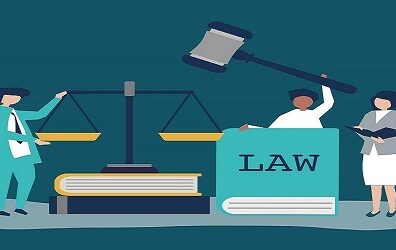
Table of Contents
Introduction
In the intricate world of business law, the doctrine of “Lifting the Corporate Veil” is a concept that holds immense significance. It’s a legal principle that can have far-reaching consequences for business owners and investors. In this comprehensive article, we’ll delve into the depths of this doctrine, exploring its origins, applications, and the pivotal role it plays in modern business jurisprudence.
What is the Doctrine of Lifting The Corporate Veil
The Doctrine Of Lifting The Corporate Veil is a legal concept that allows the courts to disregard the corporate personality and look beyond the legal façade of a corporation or business entity. A company is a legal entity having a separate identity from the persons incorporating it. A company’s separate legal entity is a legal privilege that should be used only for lawful business activities. The people involved are not allowed to hide behind the corporate personality when a fraudulent and dishonest use of the legal entity is made.
During these times the court can use the Doctrine of Lifting the Corporate Veil to serve justice. This concept enables the court to overlook a company’s independent legal personality and hold its shareholders or directors accountable for the actions or debts of the company on an individual basis. If the court is satisfied that the members or the individuals in control of the firm are accountable for the debts and liabilities of the corporation, the court will assume that there was no entity distinct from the members and take action accordingly. The shareholders cannot ask for lifting the veil for their purposes.
Some of the provisions contained in the Companies Act, 2013 in relation to Doctrine Of Lifting The Corporate Veil include:- Section 7(7) which deals with punishment for incorporation of company by furnishing false information; Section 251(1) which deals with liability for making fraudulent applications for removal of name of the company from the register of companies and Section 339 which deals with liability for fraudulent conduct of business during the course of winding up.
Origins of the Doctrine of Lifting the Corporate Veil
The origins of the Doctrine Of Lifting The Corporate Veil can be traced back to various legal precedents and historical developments. One of the foundational cases that established this principle is Salomon v. Salomon & Co. Ltd. in the United Kingdom. In this case, Mr. Salomon, a sole proprietor, incorporated his business, and the House of Lords ruled that the company was a separate legal entity from Mr. Salomon himself. This case laid the groundwork for the concept of corporate personality but also paved the way for exceptions to this principle.
Circumstances under which Doctrine of Lifting the Corporate Veil can be Invoked
The courts may decide to lift the corporate veil under specific circumstances. While the criteria may vary by jurisdiction, some common scenarios of applying the Doctrine of Lifting the Corporate Veil include:
- Fraud or Wrongful Conduct:
If the corporate structure is used to perpetrate fraud or engage in wrongful conduct, the courts may intervene to hold the individuals responsible. This is often seen in cases where a company is used to defraud creditors or hide assets. Here the Doctrine Of Lifting The Corporate Veil can be applied.
- Alter Ego or Sham Companies:
When a company is deemed an “alter ego” or a mere sham created to serve the interests of its owners or shareholders, the corporate veil can be pierced.
- Statutory Violations:
Violations of specific statutes or regulations can lead to the lifting of the corporate veil. For instance, if a company fails to maintain proper corporate records or adhere to statutory formalities, it may lose the protection of limited liability.
- Group Enterprises:
In cases involving a group of companies, the courts may lift the veil to determine the economic reality of the group’s structure and relationships among its members.
- Justice and Equity:
In exceptional circumstances where justice and equity demand it, the courts may pierce the corporate veil to prevent injustice or unfairness.
Implications of Lifting the Corporate Veil
Understanding the implications of the Doctrine Of Lifting The Corporate Veil is crucial for business owners, investors, and legal practitioners:
- Personal Liability:
When the corporate veil is lifted, individuals behind the company can become personally liable for its debts and obligations. This can have significant financial repercussions.
- Creditor’s Rights:
Creditors seeking to recover their claims may pursue the personal assets of shareholders or owners when the veil is lifted, providing them with an additional avenue for recourse.
- Deterrent Against Abuse:
The doctrine serves as a deterrent against the misuse of corporate structures for fraudulent or wrongful purposes. It reinforces the principle that companies must be operated transparently and within the bounds of the law.
- Complex Business Structures:
Business owners need to be aware of the potential for the veil to be lifted, especially in complex business structures. Careful consideration of corporate formalities and adherence to legal requirements is essential.
Modern Applications of the Doctrine of Lifting the Corporate Veil
In contemporary business and legal landscapes, the Doctrine of Lifting the Corporate Veil continues to be relevant. It often comes into play in cases involving multinational corporations, subsidiaries, and complex corporate structures. For instance, in cases of environmental violations, tax evasion, or fraudulent activities, courts may look beyond the corporate structure to identify those responsible.
Cases where Doctrine of Lifting the Corporate Veil can be Applied
Separate Personality of the Company can be disregarded and Doctrine Of Lifting The Corporate Veil can be applied in the following cases:
- In case of commission of fraud or improper conduct, courts have lifted the veil and looked at the realities of the situation. If a Company has been created or is being used for any illegal activities then the courts may disregard the separate legal status of the company and hold those behind the company responsible for their deeds.
Case Law:
In the case of Jones v. Lipman, (1962) I. W.L.R. 832, The plaintiff, Mr. Jones, and the defendant, Mr. Lipman, had made a deal for the sale of a property. But before the deal was finalized, Mr. Lipman made the decision to back out by transferring the property to a newly created business that he solely controlled.
As a result, Mr. Jones sued Mr. Lipman and asked for either damages or the particular performance of the sale contract. According to the court, Mr. Lipman’s actions were an obvious attempt to get out of his obligations under the terms of the sale contract. The property’s transfer to the recently established company was viewed as a “device” to get out of the contract and safeguard Mr. Lipman’s interests. The court determined that Mr. Lipman had violated Mr. Jones’ rights by taking advantage of the company structure.
The Doctrine of lifting of the corporate veil was used by the court. The court didn’t take into account the company’s separate legal status and held Mr. Lipman personally accountable for the terms of the sale contract. In essence, the court pierced through the corporate veil to stop Mr. Lipman from using the corporation to circumvent his contractual duties.
- Where a corporate’s appearance is merely a tool of the agency. This refers to a situation in which a company is only working as an agent or instrument for another person or entity. In such circumstances, the corporation form is employed as a front or cover to conduct the principal’s business or operations behind the scenes.
Case Law:
In the case Jones v. Guildford [1952] 1 All E.R. 615, it was observed that In India, an American firm produced a film under the name of a British company, 90% of the capital of which was held by the President of the American company that sponsored the film’s creation. The Board of Trade declined to register the film as a British film, claiming that the English business was only acting as the nominee of the American corporation.
- When business conduct violates public policy, courts pierce the corporate veil to protect public policy. When it is deemed necessary to avoid misuse or defend the broader public interest, courts may overlook a company’s independent legal existence and pierce the corporate veil to protect public policy interests.
Case Law:
Adams v. Cape Industries plc [1990] Ch 433, The topic of lifting the corporate veil in the context of health and safety requirements was addressed in this case tried in the English High Court. The court ruled that when a parent business assumed responsibility for ensuring compliance with safety standards and had control over the relevant operations, it might be held accountable for its subsidiary’s health and safety duties.
- If the personnel in de facto control of a company are resident in an enemy country or are acting under instructions from or on behalf of the enemy, the company will be considered to have enemy character. In such cases the Doctrine of lifting of the corporate veil.
Case Law:
In Connors Bros. v. Connors (1940) 4 All E.R. 179, In this case, the House of Lords concluded that the corporation was a “enemy” company since the people in charge of its affairs were from Germany, which was at the time at war with England. The said company was not permitted to carry out the action since doing so would have entailed giving money to the enemy, which was regarded monstrous and against “public policy.”
- If it is shown that the main goal of the business’s formation was to evade taxes, the Court will disregard the concept of separate entity and hold the persons involved accountable to pay the taxes that they would have paid but for the formation of the company.
Case Law:
In Vodafone International Holdings BV v. Union of India” (2012) SC 2: The acquisition of shares in an Indian corporation by a foreign entity was the subject of this court case. Here the Supreme court looked into how a complex corporate structure including offshore entities was used to avoid capital gains tax. The court removed the corporate veil and taxed the transaction, underlining that the corporation form was used to dodge tax duties.
As a result, in appropriate instances, the Courts overlook the distinct corporate personality and look behind the legal person or lift the corporate veil.
Conclusion
The Doctrine of Lifting the Corporate Veil serves as a cornerstone of business law, balancing the benefits of limited liability with the need for accountability. It underscores the importance of corporate transparency and adherence to legal requirements. Whether you are a business owner, investor, or legal practitioner, understanding this doctrine is paramount in navigating the intricacies of modern business jurisprudence. As business practices evolve and become more sophisticated, the doctrine will continue to shape the boundaries of corporate liability and ensure that justice prevails in the realm of commerce.
Follow Us
Keep Yourself Updated By Following Us





